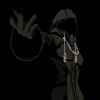| Benvenuto, Ospite |
Devi registrarti prima di poter scrivere nel forum.
|
| Statistiche del forum |
» Membri: 186
» Ultimo utente: Elric
» Discussioni del forum: 5,404
» Messaggi del forum: 37,404
Statistiche dettagliate
|
| Utenti online |
Al momento ci sono 333 utenti online.
» 0 utente(i) | 330 visitatore(i)
Applebot, Bing, Google
|
|
|
| Lettera per Sturm |
|
Inviato da: Denoela - 20-11-2017, 11:01 - Forum: Lettere
- Nessuna risposta
|
 |
La lettera sigillata viene lasciata alla locanda di Peldan's Helm per Sturm, con una mancia di 30 monete all'oste.
[vedi pm]
|

|
|
| Organizzazione [Q - DM Odisseo] A caccia di giganti. |
|
Inviato da: Brancaleone - 19-11-2017, 19:05 - Forum: Generale
- Risposte (5)
|
 |
Ciao,
Allora ormai i partecipanti alla quest "A caccia del Gigante" sono i seguenti:
Sek (io)
Julius
Sturm
Nathan
Pertanto il DM Odisseo e voi altri proponete una possibile data in settimana. Per me da lunedi a venerdì salvo imprevisti può andar bene. Naturalmente dalle 21:30 in poi.
Aspetto notizie.
Ciao
|

|
|
| [DM ???] Sei Scudi - Lettera Per Il Capo |
|
Inviato da: Toshi - 19-11-2017, 18:01 - Forum: Lettere ai PNG
- Nessuna risposta
|
 |
Jon lasciò una pergamena a Jacoby.
"Per il capo."
Il contenuto:
"Salute a voi,
Come procedono gli affari?
Ho avuto qualche disguido ad Essembra ma i miei progetti procedono, sebbene a rilento.
Non sto a tediarvi con i dettagli tecnici e comunque sia non vi contatto per farvi perdere tempo, immagino che siate già stata informata per vie trasverse.
Vengo subito al dunque.
Ufficialmente lavoro da tempo per Lady Tenebra, Majuk Zarhkath, in qualità di cerusico mercenario.
Mi ha chiesto di trovarle un luogo tranquillo dove poter svolgere esperimenti.
Le ho offerto la mia ospitalità quando avrò portato a compimento il mio progetto, tuttavia si tratta di una questione che necessità della massima riservatezza e dev'essere un posto trovato il prima possibile, per tanto dovrò occuparmi al più presto del mio accasamento ad Essembra ma temo che il tempo non basterà, pertanto mi rivolgo a voi.
Valutate se volete parlare con me e/o con madame Zarhkath al riguardo.
Sarebbe un'ottima occasione per chiarire un po' di cose.
Firmato,
Il Matto"
|

|
|
| Per le Lame |
|
Inviato da: kakashi - 18-11-2017, 08:47 - Forum: L'angolo di Brestina
- Nessuna risposta
|
 |
Un ragazzo entra di corsa e lascia una lettera a Brestina
" Avvisate gli altri che sono stato convocato in caserma ad Ashabenford e non ne conosco il motivo."
La lettera è firmata Nathan Lore
|

|
|
| [A] Strillone a Peldan´s Helm |
|
Inviato da: Rubbio - 17-11-2017, 22:00 - Forum: Voci e Annunci
- Risposte (5)
|
 |
Ech eme m..
Urdo si schiarí la voce, salí sopra la cassa di frutta appena svuotata dalle mele nel mezzo del mercato di Peldan´s Helm e suonó il campanaccio da mucca preso in prestito da Roger il contadino.
Appena vide che un crocchio di persone curiose si riuniva intorno a lui, attaccó a parlare con voce chiara ed altisonante:
UDITE UDITE
*clang clong.. clang clong*
UDITE UdiTE,
AVVENTORI ED AVVENTURIERI,
AVVENENTI DAME ED AVVENTATI MERCANTI,
VI PORTO UNA BUONA NOVELLA!
*clang clong… clang clong*
SER NATHAN LORE; IL CAVALIERE NERO; PROTETTORE DI PELDAN´S HELM
VI INVITA AD UN GIORNO DI FESTA, UN GIORNO DI GLORIA,
TUTTO PER FESTEGGIARE LA SUA RECENTE INVESTITURA AD UNO DEI LORD DELLE VALLI!
*clang clong .. clang clong*
VI SARA´ UNA COMPETIZIONE D´ARMI TRA GRANDI CAVALIERI,
UNA DIMOSTRAZIONE DI MAGIA,
ED INTRATTENIMENTI PER GRANDI E PICCINI!
*clang clong … clang clong*
GRANDI PREMI IN MONETE ED ALTRO PER I VINCITORI DELLE COMPETIZIONI,
CIBO E BEVANDE; MUSICA E DANZE,
*clang clong … clang clong*
PER ISCRIVERVI AI TORNEI O MAGGIORI INFORMAZIONI,
CHIEDETE DI URDO TROUBLETROTTER IN LOCANDA!
Lo stesso annuncio, su pergamena, viene affisso nel cortile davanti alla locanda di Peldan´s Helm e cantato un paio di volte in locanda.
|

|
|
| Messaggio per Galduran |
|
Inviato da: Teg - 17-11-2017, 19:13 - Forum: Lettere
- Nessuna risposta
|
 |
* Un novizio messaggero sotto l'egida di un incantesimo divino di protezione dal Male parte in prima mattinata dalle Sale della Giustizia per raggiungere con massima urgenza il villaggio di Peldan's Helm con il compito di trovare il Paladino del Piangete e consegnargli un breve messaggio da parte dell' archivista Mathlin*
Abbiamo importanti e allarmanti informazioni da discutere relative al necromante cui stai dando la caccia. Anche se non sarai d'accordo e questo comporterà il dover abbandonare la tua nobile guardia per qualche ora, ti prego di ascoltarmi e di raggiungermi alle Sale della Giustizia non appena ricevuto questo messaggio.
Muoviti sempre con la protezione dei nostri giusti Dei e ti prego d' essere cauto.
Veglia sulla sicurezza di questo novizio.
Mathlin.
|

|
|
| Portapergamene |
|
Inviato da: Rasec9 - 17-11-2017, 03:23 - Forum: Segnalazione BUG
- Risposte (4)
|
 |
Oggi ho riaperto il portapergamene dopo un po' e ho scoeprto che son sparite un sacco di pergamene che avevo la dentro. Tipo tutto il livello 1 e molte degli altri livelli. Non so dire ne come ne in che modo.
Non ricordo tutte le pergamene ma alcune si.
|

|
|
| Manifesti appesi in tutta Battledale |
|
Inviato da: Exem - 16-11-2017, 19:43 - Forum: Voci e Annunci
- Nessuna risposta
|
 |
Dei manifesti vengono appesi nei più gettonati punti di interesse di Battledale che riportano:
"Le Lame D'Argento vi invitano all'apertura ufficiale della sede con un inaugurazione piena di bevande e stuzzichini.
Vi attenderanno li i loro fondatori, disponibili a dialogare e rispondere ai vostri quesiti."
Show ContentSpoiler:
l'evento è previsto per domenica sera
|

|
|
|
|
| Ultime discussioni |
Crafting Mondano - Sistem...
Ultimo messaggio di: feo90
08-10-2025, 00:23
|
Kaedrin - Talenti
Ultimo messaggio di: feo90
22-09-2025, 10:14
|
Kaedrin - Modifiche alle ...
Ultimo messaggio di: feo90
17-09-2025, 12:54
|
Kaedrin - Scout/Esplorato...
Ultimo messaggio di: feo90
16-09-2025, 10:37
|
Kaedrin - Ninja
Ultimo messaggio di: feo90
16-09-2025, 10:31
|
Kaedrin - Hexblade/Lama I...
Ultimo messaggio di: feo90
16-09-2025, 10:14
|
Baldur Gate 3 finale cano...
Ultimo messaggio di: CatFern
12-09-2025, 22:40
|
Kaedrin - Thug/Bandito
Ultimo messaggio di: Lotho
11-09-2025, 20:59
|
Aree da tenere
Ultimo messaggio di: feo90
11-09-2025, 19:17
|
Server Discord
Ultimo messaggio di: DM Artemis
10-09-2025, 18:31
|
|